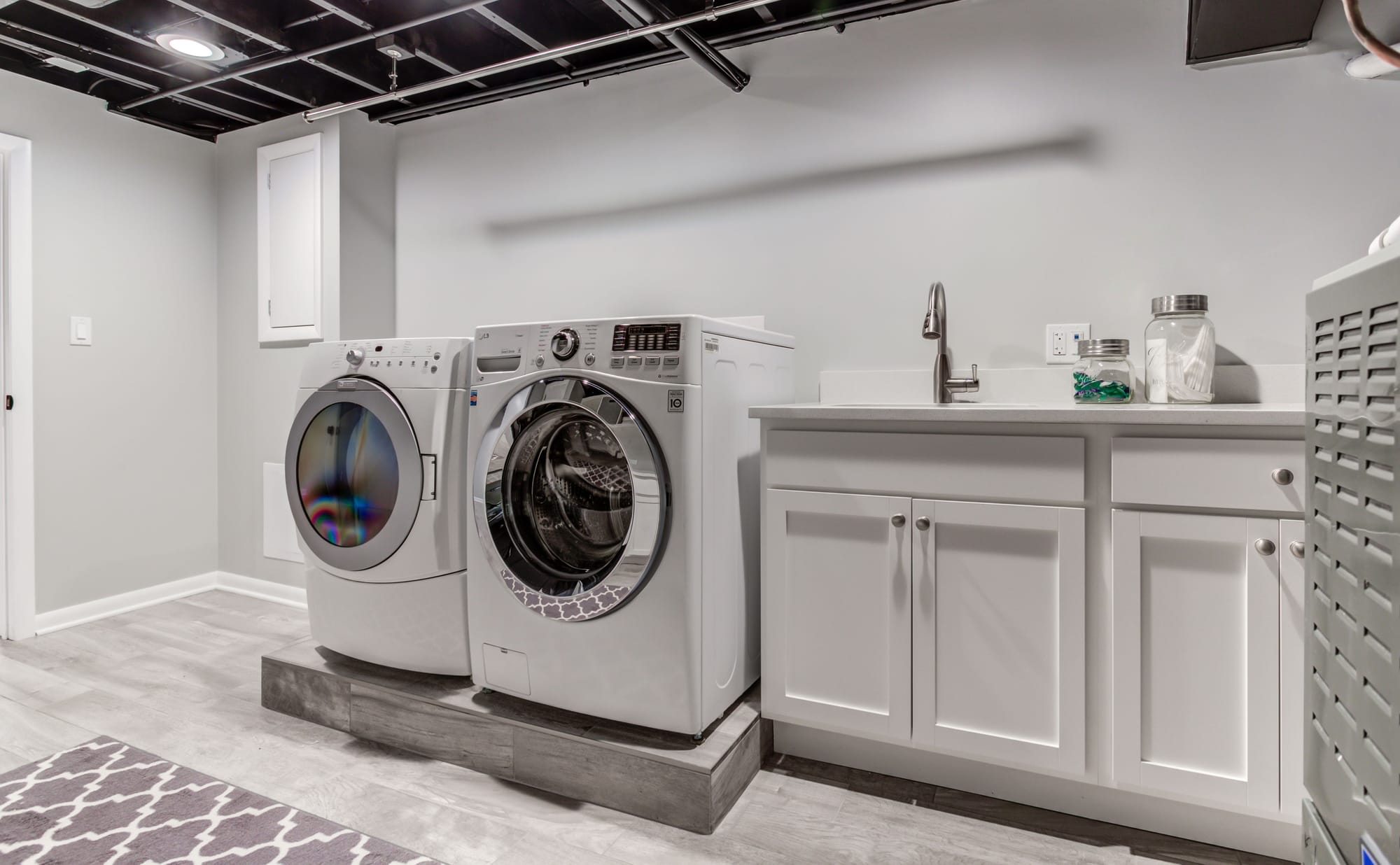Washing Machines in Basements: Why Modern Units Struggle More Than You Think
Today’s washing machines often lack the pumping power of older models. In basements, this reduced head pressure can cause drainage failures and premature wear. Here’s why it happens and why a utility sink with a sump pump is often the best solution.

Introduction
When people think about advances in home appliances, they usually imagine improvements. Washing machines today are quieter, lighter, and far more energy- and water-efficient than the behemoths of the 1980s. But with these improvements came a trade-off that’s often overlooked: modern washing machines simply don’t have the same discharge head pressure as older units, which can create serious issues when the unit is installed in a basement.
Pump Pressure: Then vs. Now
In plumbing terms, head pressure is the vertical distance a pump can move water against gravity. In the 1980s, washing machines often had discharge pumps capable of overcoming 8–10 feet (96–120 inches) of head. This was more than enough to push wastewater into an elevated drain line or directly into a house’s main waste stack.
By contrast, today’s high-efficiency machines typically produce a maximum head of 4–6 feet (48–72 inches). Manufacturers reduced pump capacity because modern machines are designed around conserving electricity and minimizing mechanical stress, not brute force pumping. This creates problems in basements, where the main sewer line often exits the foundation wall several feet above the basement slab.
Comparison of Average Washing Machine Pump Head
| Era | Typical Head Pressure (feet) | Typical Head Pressure (inches) | Notes |
|---|---|---|---|
| 1980s–1990s | 8–10 ft | 96–120 in | Heavy-duty pumps designed for durability and power. |
| 2000s–2010s | 6–8 ft | 72–96 in | Transitional models, reduced energy consumption. |
| Today (2020s+) | 4–6 ft | 48–72 in | High-efficiency models, limited pump capacity. |
Code Requirements and Manufacturer Specifications
Plumbing codes don’t prescribe exact pump head values but do regulate how washing machines connect to drainage systems. Under the 2021 International Residential Code (IRC) P2706.2, a laundry standpipe must be at least 18 inches and no more than 42 inches above the trap weir. That works fine on a main floor, but in a basement installation the standpipe connection may be located 5–7 feet above the washer.
Older machines could handle this. Many of today’s models cannot. When a plumber simply connects the discharge hose to a standpipe set too high, the washer’s pump operates at or near its maximum output. This creates excess backpressure, causing the motor to strain and wear prematurely. It’s not uncommon for pumps to fail early when asked to perform outside their intended head rating.
A Better Alternative: Laundry Sink with Sump Pump
If your washing machine can’t meet the head requirement for your basement’s plumbing layout, the best solution is to install a utility sink (slop sink) with a dedicated sump pump. Here’s how it works:
- The washer drains directly into the utility sink, typically at a comfortable 30–36 inch height.
- The sink basin collects the wastewater.
- A small sump pump, located below the sink or in an enclosed pump basin, automatically activates when water rises in the reservoir.
- The sump pump then discharges the wastewater up and out to the house’s main waste line—easily overcoming the elevation difference.
These systems are compact, relatively inexpensive, and ensure the washing machine never has to exceed its design limits. They also comply with code requirements, provided the pump discharges through an indirect connection with an air gap (IRC P3002.3.1).
Conclusion
Washing machines of the past were built like tanks, and their pumps could easily move wastewater up to a first-floor drain line, even from a basement. Modern machines, designed for efficiency, often can’t. If you’re planning a basement laundry setup, don’t rely on yesterday’s assumptions. Check the manufacturer’s specifications, measure the head pressure needed, and if in doubt, use a utility sink with a sump pump. It’s a small investment that will extend the life of your washing machine and keep your basement laundry running smoothly.
